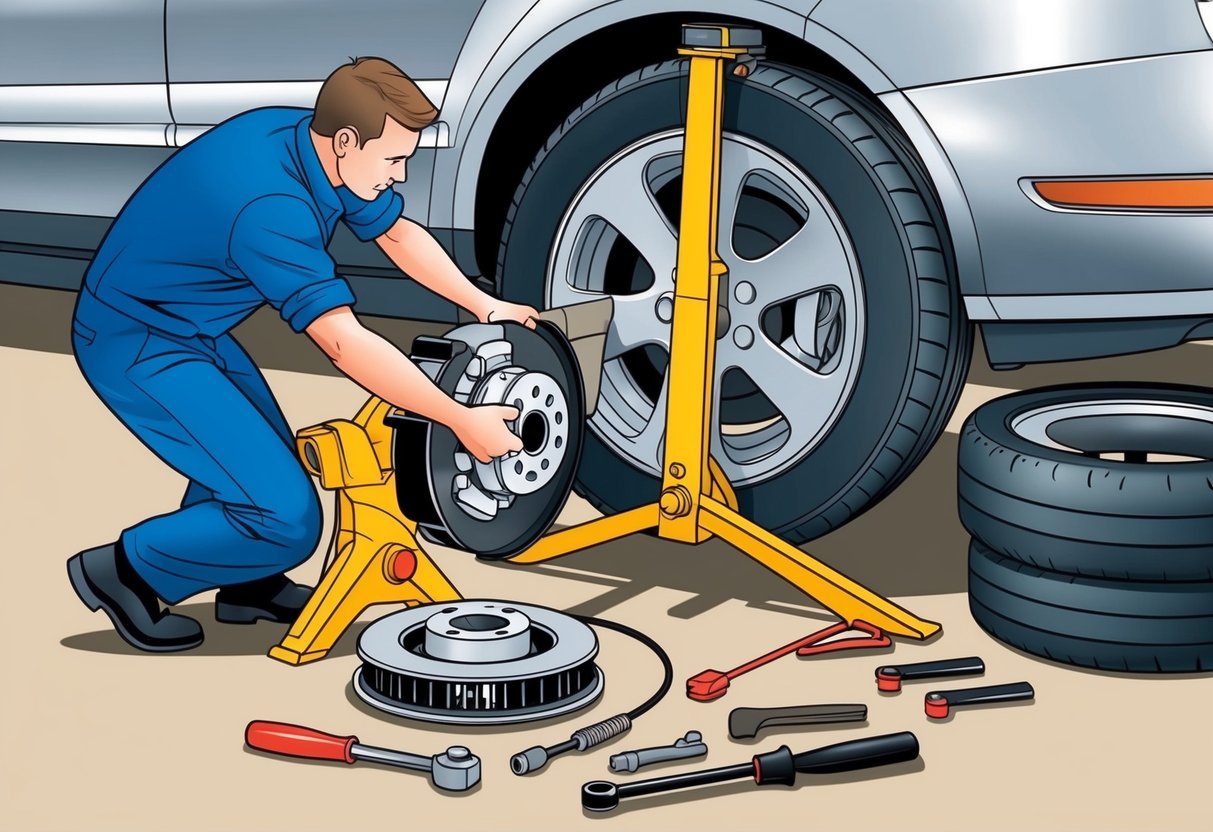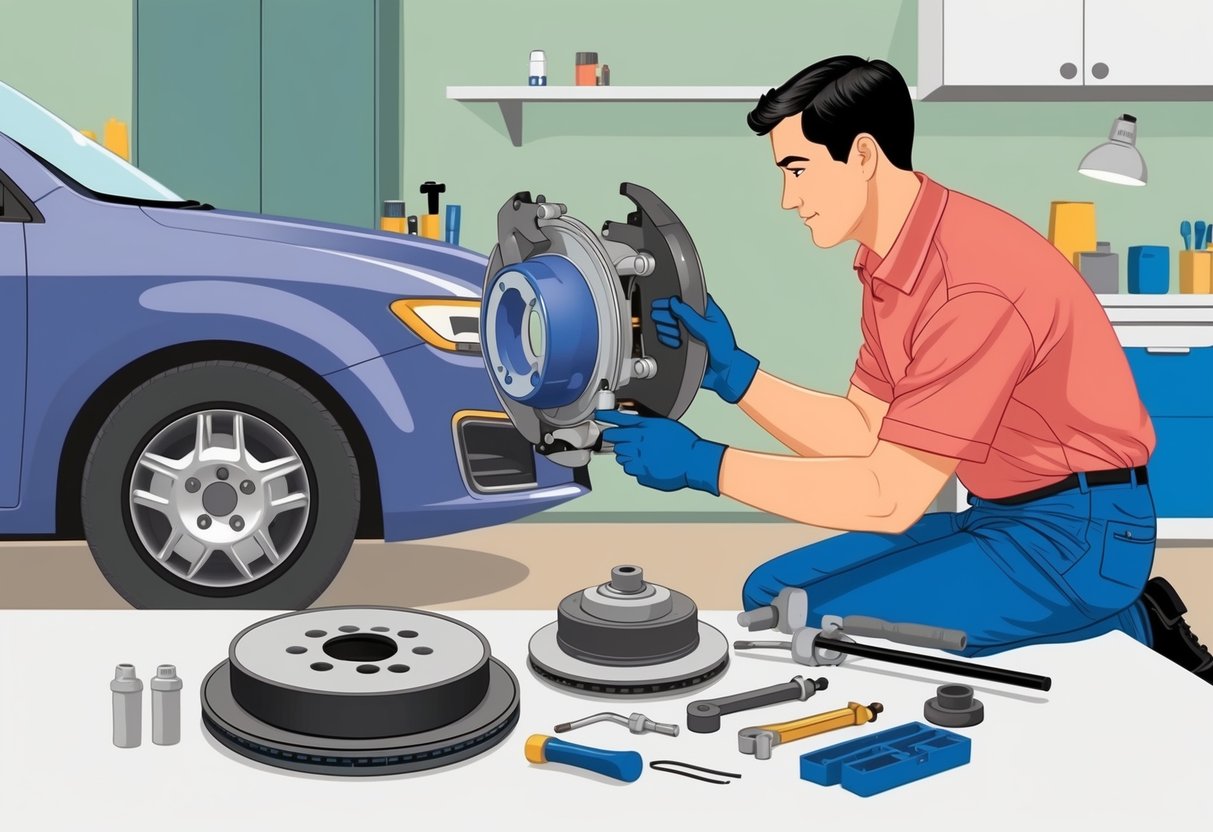
Maintenance Tips and Common Brake Issues by Brand

Brake performance and reliability can depend heavily on regular upkeep as well as the specific engineering differences among car brands. Addressing squeaky or worn brakes requires tailored maintenance and awareness of unique brake system designs.
Routine DIY Brake Maintenance
Performing simple checks and cleaning can prevent many common brake issues at home. Regularly inspecting brake pads for thickness, checking for uneven wear, and changing them when needed helps maintain safe braking, especially for models like Honda, Chevy, and Subaru.
It is also important to clean brake rotors with brake cleaner and examine the surface for scoring or warping. Brake fluid should be inspected and replaced every two to three years, as recommended by most brands, including Toyota, Ford, and Nissan.
Topping off with the correct brake fluid type prevents soft pedal feel and maintains system pressure. Most DIY brake jobs also require lubricating caliper slide pins, which can reduce squeaking caused by friction, as detailed in this AutoZone squeaky brake guide.
DIY Maintenance Checklist:
- Inspect brake pads and rotors
- Lubricate slide pins
- Top off and flush brake fluid
- Check wheel bearing condition for play or noise
- Monitor for warning lights or new brake noises
Brake System Differences in Popular Brands
Different automakers often use unique brake designs, friction materials, and safety systems, which can influence both the DIY process and the likelihood of specific problems. For example, European brands like Audi, Mercedes, and Volvo frequently use advanced electronic brake monitoring systems and softer pad materials.
DIYers may need a scan tool to reset electronic warning lights or service electric parking brakes on models from these brands. Japanese manufacturers such as Toyota, Mazda, and Honda prioritize straightforward access for brake pad and rotor replacement.
Their designs commonly use simple caliper constructions and semi-metallic pads, which may produce more noise but tend to be easier and less costly for home repair. American brands like GM, Ford, Chevy, and Chrysler sometimes use integrated wheel bearing and hub assemblies in the rear brakes, requiring extra steps for bearing inspection or replacement.
Brake noise in Kia and Lincoln models is often related to hardware wear or corrosion on the pad shims.
When to Seek Professional Brake Service
While routine DIY maintenance can address squeaky or worn brakes, some symptoms indicate the need for certified brake service. If pedal travel suddenly increases, fluid is visibly leaking, or warning lights remain on after a fluid top-off, a mechanic should inspect for hydraulic failure or ABS issues.
Unusual grinding, deep scoring on rotors, or vibration when braking—including on Mazda, Subaru, and Nissan vehicles—may signal damaged components that go beyond pad wear. Replacing sealed rear wheel bearings, resetting electronic parking brakes in Audi or Mercedes, and diagnosing persistent brake noise despite new pads often require professional tools and expertise.
Persistent warning lights, unresponsive brakes, or severe corrosion should always prompt an appointment with a skilled brake technician. Attempting complex repairs beyond routine pad or fluid changes can risk further damage and compromise safety.
Frequently Asked Questions
DIY brake repair involves specific procedures to address squeaky or worn brakes, identify the real causes behind brake noise, and apply the most effective remedies for lasting results. Knowing the right techniques for inspection, lubrication, and brake squeal prevention improves both safety and ride comfort.
What are the steps to troubleshoot and repair squeaky brakes?
Troubleshooting squeaky brakes starts with removing the wheel and visually inspecting the brake pads, rotors, and calipers for signs of uneven wear, glaze, or debris buildup. Cleaning the rotors with brake cleaner and checking the calipers for stuck components can resolve many common causes of noise.
Replacing worn brake pads and applying anti-squeal lubricant to contact points can reduce squeaking. Detailed steps for brake pad replacement include removing the wheel, inspecting the fluid level, unbolting the caliper, and swapping the old pads for new ones.
For further guidance, see a step-by-step DIY brake pad replacement tutorial.
Is it possible to fix squeaky brakes without removing the tire, and how?
It is uncommon to fix squeaky brakes effectively without wheel removal. Full access to brake components is necessary to clean, lubricate, or replace parts involved in noise production.
Attempting anything less may temporarily reduce noise but often misses underlying issues such as pad wear or rotor contamination. For a thorough resolution, removing the tire remains the recommended approach.
How can I tell if my brake pads are worn or if there’s another issue causing squeaking?
Worn brake pads usually have a thickness under 3mm, and many include a wear indicator that squeaks when the pad is low. Uneven wear patterns, grooves in the rotor, or residue on the braking surface can point to other mechanical problems.
Persistent squeaking even with new pads can suggest issues with caliper operation or rotor surface condition. Cleaning and close inspection help narrow down the cause.
Can a brake squeal spray remedy squeaky brakes, and what is the correct application method?
A brake squeal spray or anti-squeal lubricant can help stop brake squeaks when applied correctly. The spray is usually applied to the back of the brake pad where it contacts the caliper, never on the pad’s friction surface.
Let the product dry fully before reassembling brake parts. Regular cleaning with brake cleaner may also play a role in fixing squeaky brakes.
What is the proper way to lubricate brakes to prevent squeaking?
To prevent brake squeal, apply a thin layer of high-temperature brake grease or anti-squeal compound on the back of the brake pad and on the sliding surfaces of caliper brackets. Do not get grease or lubricant on the rotor or pad friction surface.
Reassemble and check for smooth operation before finishing the repair process. Proper lubrication reduces vibration and noise during brake use.
Why do my new brake pads squeak at low speeds and how can I resolve this?
New brake pads may squeak at low speeds due to an initial bedding-in period or residual manufacturing coatings.
A lack of lubrication on the contact points can also cause noise.
Cleaning the rotors and correctly greasing the pads may help.
Ensuring the pads are properly seated against the rotor can resolve this issue.
If the squeaking persists after a short break-in period, check for improper installation.
Rotors that need resurfacing can also contribute to squeaking.